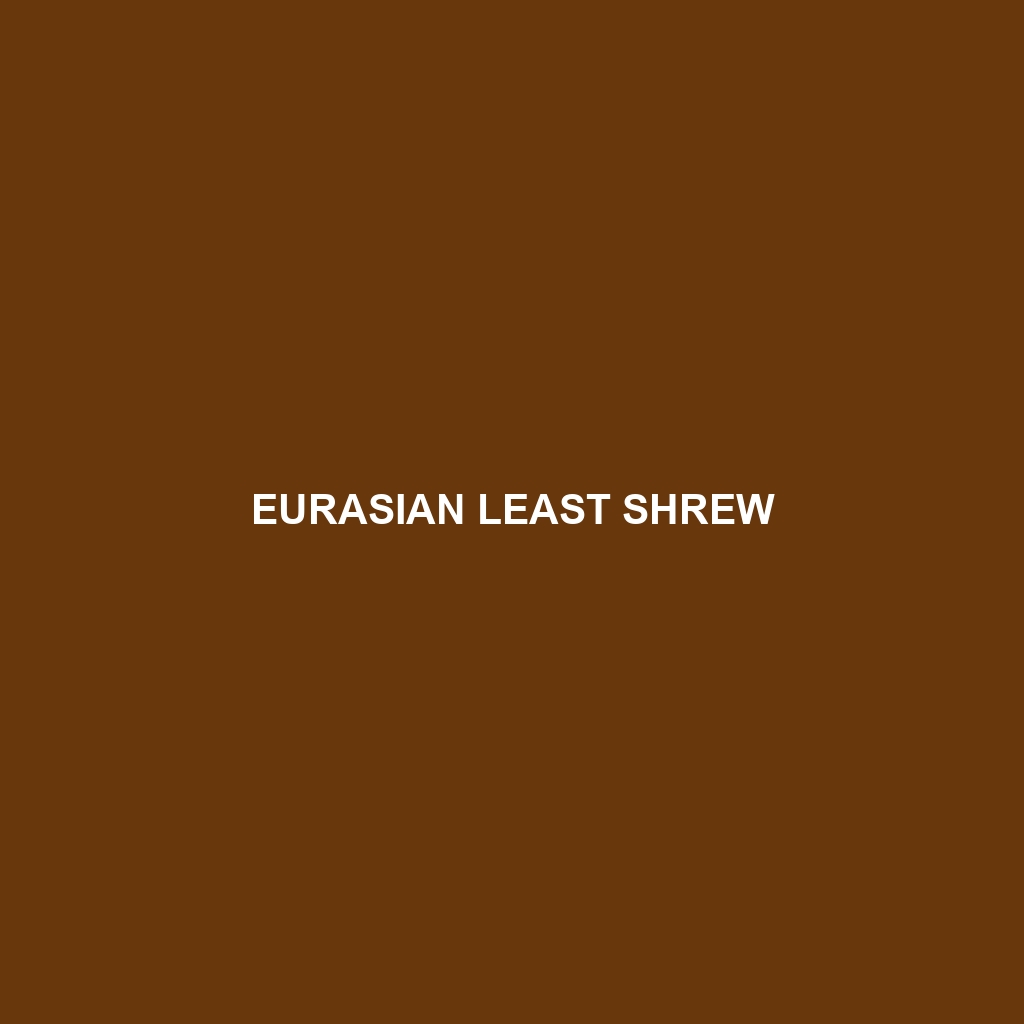Eurasian Least Shrew
Common Name: Eurasian Least Shrew
Scientific Name: Sorex minutus
Habitat
The Eurasian Least Shrew primarily inhabits a variety of environments across Europe and parts of Asia. This species is commonly found in moist grasslands, woodlands, and areas near water bodies such as rivers and lakes. They prefer regions with abundant foliage, which provides cover and hunting grounds, particularly in countries such as Sweden, Norway, and Russia. Their adaptability allows them to thrive in both rural and urban settings.
Physical Characteristics
The Eurasian Least Shrew is one of the smallest mammals in Europe, typically measuring about 7 to 10 cm in length, excluding the tail. Weighing only around 5-9 grams, this shrew features a slender, elongated body with a pointed snout. Its coat is soft and dense, exhibiting a brownish-grey coloration with lighter underparts. Notable characteristics include its small eyes and short limbs, which enhance its burrowing abilities. The fur’s texture and color provide excellent camouflage in their natural habitat.
Behavior
Eurasian Least Shrews are primarily nocturnal creatures, engaging in active foraging during the night. They are known for their fast and agile movements, which help them escape from predators. These shrews communicate through high-pitched vocalizations and are highly territorial, often marking their grounds with scent. Their burrowing nature allows them to create complex tunnel systems, providing shelter and hunting areas.
Diet
The diet of the Eurasian Least Shrew consists mainly of invertebrates, such as insects, worms, and spiders, making them important predators in their ecosystem. They also consume small vertebrates and plant matter when the opportunity arises. Their high metabolism requires them to eat frequently throughout the day, typically consuming food that is equivalent to their body weight daily. This feeding habit emphasizes their role as a crucial component of the food web.
Reproduction
Breeding typically occurs from spring to early summer, with females giving birth to litters that range from 3 to 7 young. The gestation period is around 21 to 24 days. The young are born blind and hairless, relying heavily on maternal care during their early weeks. As they grow, the offspring become more independent and are often weaned in about three weeks. The rapid reproductive cycle contributes to the species’ population resilience.
Conservation Status
The conservation status of the Eurasian Least Shrew is currently categorized as “Least Concern” by the International Union for Conservation of Nature (IUCN). However, habitat loss due to agricultural expansion and urban development poses potential threats to their populations. Ongoing monitoring is essential to ensure that this species maintains stable numbers in the future.
Interesting Facts
– The Eurasian Least Shrew is known for its voracious appetite, having a metabolism that demands constant foraging throughout its active hours.
– Despite its small size, the shrew has a surprisingly high predatory impact on insects and other small invertebrates within its habitat.
Role in Ecosystem
As a significant predator of invertebrates, the Eurasian Least Shrew plays a vital role in controlling insect populations, which helps maintain a balanced ecosystem. Their presence indicates a healthy environment, as they thrive in regions with sufficient food sources and suitable habitat conditions. Additionally, they serve as prey for larger predators, thus contributing to the food chain.
